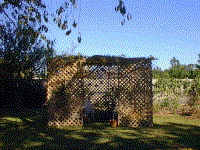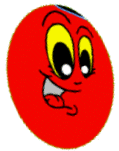An ancient Jewish belief considers the first day of Sukkot to be the day on which a person begins accumulating sins for the next year. To start the new year off right, many people begin building their sukkah right after Yom Kippur (you can also start making the decorations which is fun for everyone). The sukkah is a temporary house, where you

eat (and sometimes sleep) for the holiday. It is a reminder of the forty years we spent in the desert going to Israel.
Sukkot celebrates the clouds that protected Israel in the desert, while they wandered for forty years. These clouds were the Shekhinah (presence of HaShem). The Shekhinah protected Israel from all sides and from above. The tabernacles are also a celebration of the tents the Israelites lived in while they wandered in the desert.
The reason for celebrating Sukkot after Yom Kippur is that after atoning on Yom Kippur we are like a clean slate. With this fresh beginning, we are especially capable of fulfilling the mitzvah of Joy on Sukkot. Joy is an important part of the celebration.
Also, during the fall harvest, farmers would live in Sukkot on the edges of their fields while they completed the harvest.
Our Sukkah is in Georgia, USA. We made paper chains, by cutting multi-colored construction paper into strips, and linking them together. We used Swamp-Black-Eyed Susans on the Sukkah to add color. Also, we put fruits inside. To hang fruit, take a length of string, a fruit and a crochet needle. Pierce the fruit with the crochet needle and catch the thread on the other side, using the crochet needle to pull it through to the other side. (We usually double up on strong thread to make sure it’ll stand up to wind.) We use fruits grow in Israel, like lemons, oranges, apples, and especially pomegranate.
We also use things that grow in the South, like gourds, pumpkins, and Indian corn. If you live in a place where the trees turn different colors for fall, you can use the leaves to add color to your Sukkah as well.
The most important symbol of Sukkot is the sukkah itself. It is a small hut (or booth), there is no permanent roof we use branches to cover the top. Many congregations have a sukkah they build in their courtyard.
A Sukkah must have a chair in it, and should also have a table. If you sleep in your Sukkah, a cot is a good idea. After all the decorating, we can spend time in a Sukkah and feel like we are at home away from home.
The Lulav is an important part of Sukkot as well. It’s made up of four special plants that grow in Israel. The main part of a lulav is a heart of palm. On either side are branches from a Hadas, or myrtle, and an Aravah, or willow. We bind these together using palm, and hold it in our hand with an Etrog, or citron. The Etrog must have a nub on the end of it, called a Pitom. It must also have the nub where it was separated from the tree, and should be smooth.
We hold the Lulav together in both hands, and say the blessing and then shake it to the North, then the south, then the West, and then the East. I especially like to smell the Hadas, Aravah, and Etrog. Each has a special smell, and they remind me of the trees in Israel.
In Israel, many people live in apartment buildings. If you live in an apartment, where can you put your Sukkah? Well, many Israelis put theirs on their balconies. Some make a Sukkah for the entire apartment building to share. During Sukkot in Israel, you can drive around and look at the buildings-almost every one has at least one Sukkah.
It is a tradition among some Jews to save their Lulavim until the next Passover and use them to sweep up the bread crumbs after they search for chametz. It is a really nice way to tie holidays together.

